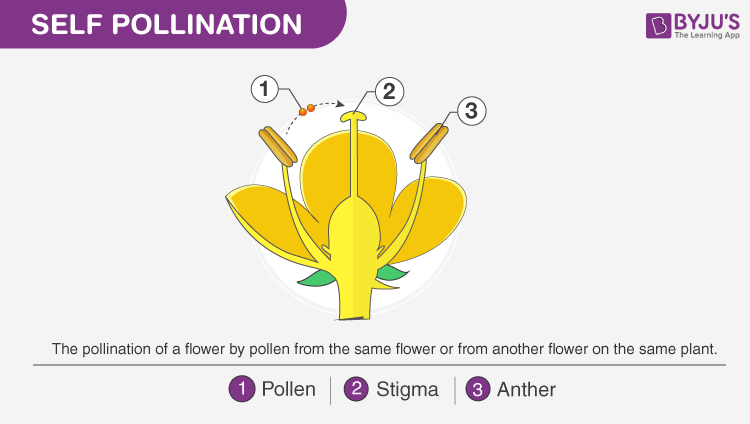Reproduction in plants
Sexual Reproduction in Plants
Reproduction in plants takes place sexually and asexually as well. But the majority of the flowering plants reproduce sexually. The flower is the reproductive part of a plant i.e., both male and female gametes are produced by flowers. Sexual reproduction in plants takes place in flowers. The complete flower typically consists of four parts:
- Petals
- Sepals
- Stamen (male reproductive part)
- Pistil/Carpel (female reproductive part)
Stamen (male reproductive part) consists of anther and filament.
- The anther is a sac-like structure that produces and stores pollen.
- The filament supports the anther.
The pistil (female reproductive part) comprises three parts- stigma, style, and ovary.
- Stigma is the topmost part of a flower.
- The style is the long tube which connects the stigma to the ovary.
- The ovary contains a lot of ovules. It is the part of the plant where the seed formation takes place.
A flower may consist of either stamen or pistil or both. Based on this, a flower can be either uni sexual or bisexual. A bisexual flower is composed of all the four parts mentioned above, e.g. Rose, China rose. Whereas, plants like papaya and cucumber produce only uni sexual flowers.
Pollination and Fertilization
In order to form a zygote, male gametes in pollen grains have to fuse with egg in the ovule. This is achieved by the process called pollination. Pollination is the process of transferring pollen grains from the anther – male part of a flower, to the stigma – female part of a flower. Depending on the pollen landing, pollination can be classified into two types-
- Self-Pollination: A pollination where the pollen transfer takes place between the anther and stigma of the same flower.
- Cross-Pollination: A pollination where the pollen transfer takes place between the anther and the stigma of different flowers of the same plant or different plants of the same species.
Also Read: Different Types of Pollination


Generally, pollination takes place with the help of certain agents so-called pollinators. They include insects, water, birds, wind, etc.
Once pollen gets transferred to the stigma the male gametes from pollen grains release and fuses with egg in the ovule to form a zygote. This process of fusion of gametes is called fertilization. The zygote thus formed, divides and develops into an embryo, and later into a seed. The ovary develops into a fruit.
Comments
Post a Comment